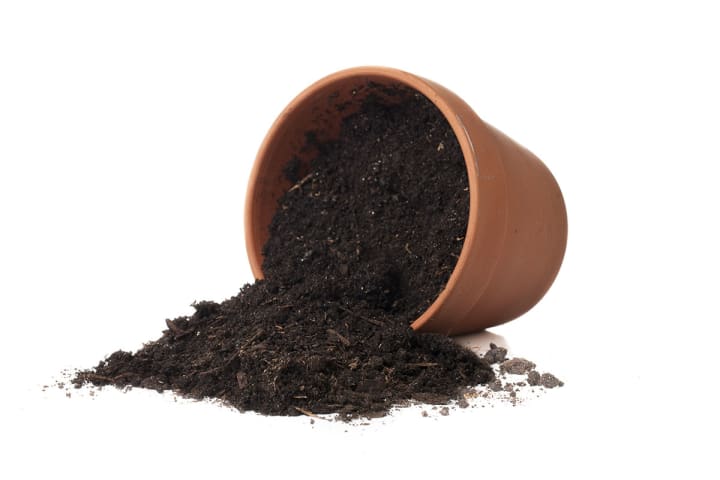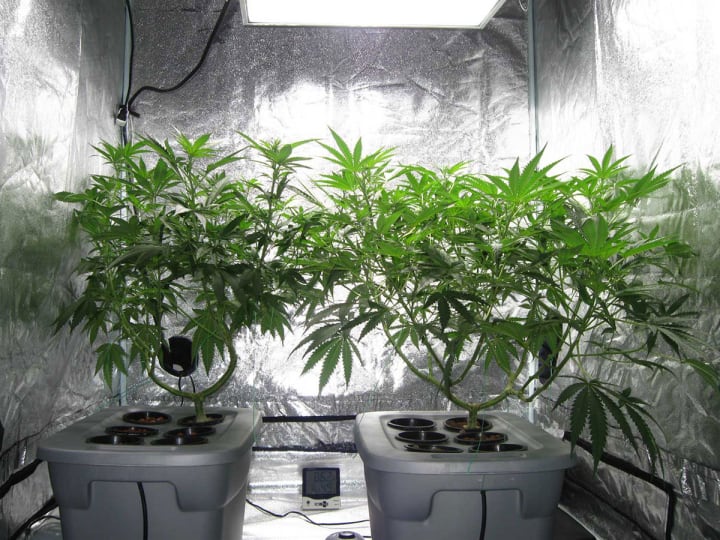
Most articles and books about growing marijuana discuss methods of cultivating the plant indoors under artificial lights or planting outdoors. But there is another alternative growing marijuana indoors with natural light. If Pot is one of mother nature’s favorite natural healing plant that surely natural light has sustained its existence long before the commercialization of the indoor grow bulb industry.
Porches and window sills, skylights and translucent roofs, greenhouses and lean-tos are all possible garden sights for natural light cultivation. Any area which can supply the plants with five hours of direct sunlight during the peak of the growing season (June/July) can support vigorous growth and lush, healthy plants. When marijuana does not get enough light it will grown an elongated stem and small leaves. The natural light even through a properly placed window, will result in full fluffy bud.
Southeastern and southwestern exposures provide the most sunlight followed by southern, eastern and western. But a northern exposure is adequate if the garden is given supplemental light from an incandescent grow bulb or small fluorescent unit.
Growing marijuana indoors with natural light is easy and requires little equipment—just a container, planting mix and fertilizer. Choosing or concocting the right fertilizer is key for growth, and can be read about more in the marijuana soil guide.
Although most natural light gardeners grow only a few plants, hefty crops can be grown in greenhouses, under skylights, and in large windows.
Detection

Image via HidHut
Detection is the main problem faced by natural light gardeners. It is hard to explain to a cop that you never noticed the familiar seven fingered leaves that were growing in your living room window. Of course many of us are proud to display our horticultural art. But plants can be hidden by using curtains, plastic film or crystal paint, which is sold in tropical fish stores for decorative use. Make sure that the plants cannot be seen in silhouette at night. They can also be placed at a distance from the window or below it, to keep the garden invisible from the outside.
Starting

Image via PlantScapers
To get started, just fill a container with potting soil or mix from your local nursery or garden center. Some gardeners mix this in a two to one ration with perlite or vermiculite. These additives help keep the soil loose and aerated. Plants can also be started in a non-nutrient medium such as pebbles or a vermiculite perlite mix and fed with a water soluble hydroponic fertilizer. Home depot’s outdoor department offers a great selection of planting materials, all you need to do is provide these seeds.
Seeds can be planted in individual pots, flats or in large containers. While getting them to sprout is often the most difficult part, reading up on how to sprout weed seeds can help you quickly and effectively sprout your plants. Fast-growing marijuana plants will outgrow small pots or flats very quickly, and will eventually need a three to five gallon container. Gardeners can choose the most vigorous seedlings for transplanting.
Another method postage stamp gardeners often use is to plant several seeds in one larger container and to thin them as they grow and crowd each other. Both methods work well.
Supplemental Light
Gardeners who don’t have an adequately lit area for cultivation can use artificial light as a supplement. The easiest method is to use a grow bulb which fits in an ordinary socket. Clamp fixtures hold the lights in convenient positions.
The amount of supplemental light required for growing pot indoors varies with the amount of natural light the garden receives. An unobstructed northern exposure requires no more than 10 watts of fluorescent light during the winter. But more light would promote vigorous growth.
But when it comes to supplemental light, there are various options with several pros and cons that come along with choosing the best and most affective lighting source for your growing operation.
Pros:
- Comes in many shapes and sizes which works well for the low-key indoor gardening.
- Best light for clones, seedlings, and young plants.
Cons:
- Lowest yields/watt.
- Does not work well with taller plants due to the light not being powerful enough.
Pros:
- Highest yields/watt.
- Best light for Flowering Stage.
- Once properly hung no adjustment needed (like fluorescents).
Cons:
- Generates a lot of heat. Exhaust fan needed. Unfortunately not convenient for most hobbyists.
- More parts=more problems. HID typically need bulb, ballast, fixture, hood, & exhaust fan.
Pros:
- Built-in cooling (able to get away without venting heat like HID)
- Plug and play: additional items are not needed.
- Believed to produce more resinous buds (Although more tests need to be done to provide a more accurate answer).
Cons:
- Tend to need more space between the plant and light fixture.
- Adjustment needed between stages.
- Bigger size bulbs 275W+ may need to be vented (similar to HID).
Growth and Flowering

Photo via GrowWeedEasy
The spring or early summer, with its warm moist air, is the best time to start marijuana indoors. But it can be started at any time of the year. During the winter the plants growth will be slower, and the leaves smaller because of the weaker light.
The female marijuana plant flowers when the days grow shorter by chemically monitoring the number of hours of uninterrupted darkness. The male may flower in spite of the light cycle. If you don't illuminate the growing area the plant will flower in the fall. But if the lights go on at night the plant will not flower. She will continue to grow new leaves and branches, will show a spurt of energy each spring, and live for several years.
To assure darkness to induce flowering, you can put the plants in a closet each sundown and put them out each morning. They will flower in a few weeks. After flowering, if you cut off all the bud material, but leave some leaf, the plant may begin to grow again.
About the Creator
Ed Green
Gynecologist. Amateur Farmer and weed whacker. Loves figure skating and Liza Minnelli. Bakes amazing brownies.






Comments
There are no comments for this story
Be the first to respond and start the conversation.